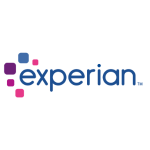Bright and early on a Thursday morning, hundreds of data professionals convened for the 2017 Data Governance Financial Services (DGFS) conference. Hosted in Jersey City, New Jersey, DGFS brings together like-minded and passionate data professionals from across the country with a common mission: to share best practices and overcome challenges related to their data governance programs.
While the tutorials focused primarily on governance, the speakers often referred to several disciplines throughout their presentations, including data lineage, data quality, and data management. As the event progressed, it became evident that these disciplines are really cut from the same cloth, and organizations need to excel at all of these areas in order to do any of them successfully.
While data governance is a topic many organizations talk about, very few of them actually do it well. That’s because developing a data governance program requires a lot of time and resources from across the enterprise. For starters, you’ll need executive- and department-level support, a dedicated council with line-of-business and compliance representation, visibility and authority over data across the enterprise—and lots of caffeine! Those who spoke about their existing data governance programs, in fact, say they have been iterating upon their initiatives for more than a decade.
So what advice did the speakers leave us with? Here are four proven tips for implementing successful data governance at your organization:
- Always be thinking about metrics
It can be so easy for those of us who are passionate about data to get swept up in the technical aspects of our data governance programs. Things like the number of fields that are being monitored, the number of records that have been validated, and the number of terms in the business glossaries are interesting, indeed, but probably not to the source of funding for our businesses. You can expedite your program by always keeping “the numbers” top of mind. You’ll want to ensure that business leaders can see a tangible return on investment (ROI), either in terms of the revenue you are generating or the money you are saving the business.
Check out our interactive worksheet to get started!
Business Case Worksheet
- Data should be by the people, for the people
Good data governance is about people. It’s about creating processes and policies to help people interact with and use data in a responsible way. It’s also about creating data that business users believe is trustworthy. That’s why organizations should rely on their people—the ones who really know the data—to design and implement their data governance programs. For many organizations, this will be your data stewards (those who are accountable for your data and metadata) and your chief data officer (the executive sponsor who defines the data strategy for the business). Further, many organizations rely on a governance council with representatives from around the organization to prioritize projects, determine business value, refine business rules, and direct the correction of erroneous data. - Engage the business and think downstream
The long-term success of your data governance program depends on whether or not it meets the needs of business users and those further downstream, such as regulatory and compliance. That’s why before you begin, it’s important to interview the business owners to understand how they work with the data and to ensure that business rules are appropriate for their use. In addition, you might find that certain data fields are subject to regulation, so it’s important to speak with your compliance team from the start to understand any sensitivities when developing your strategy. - Data quality should be top-of-mind
The quality of your information goes hand-in-hand with your data governance program. Typically, organizations will implement data quality as a subset of their overarching governance program. Yet the two are linked in such a way that you cannot do governance without quality and vice versa. Your data quality team will likely be responsible for performing routine data quality checks and analyzing those results, participating in root cause analysis, and maintaining business rules and data quality dashboards.
Building a data governance program is critical for today’s data-driven businesses. But your governance strategy is only as good as your data quality. That’s where we come in. We’ll help you to ensure your data is fit for purpose so your governance program gets off to the right start.
Learn how Experian Pandora helps organizations break down data silos, improve data quality, and monitor data as part of an ongoing governance program.
Learn more








